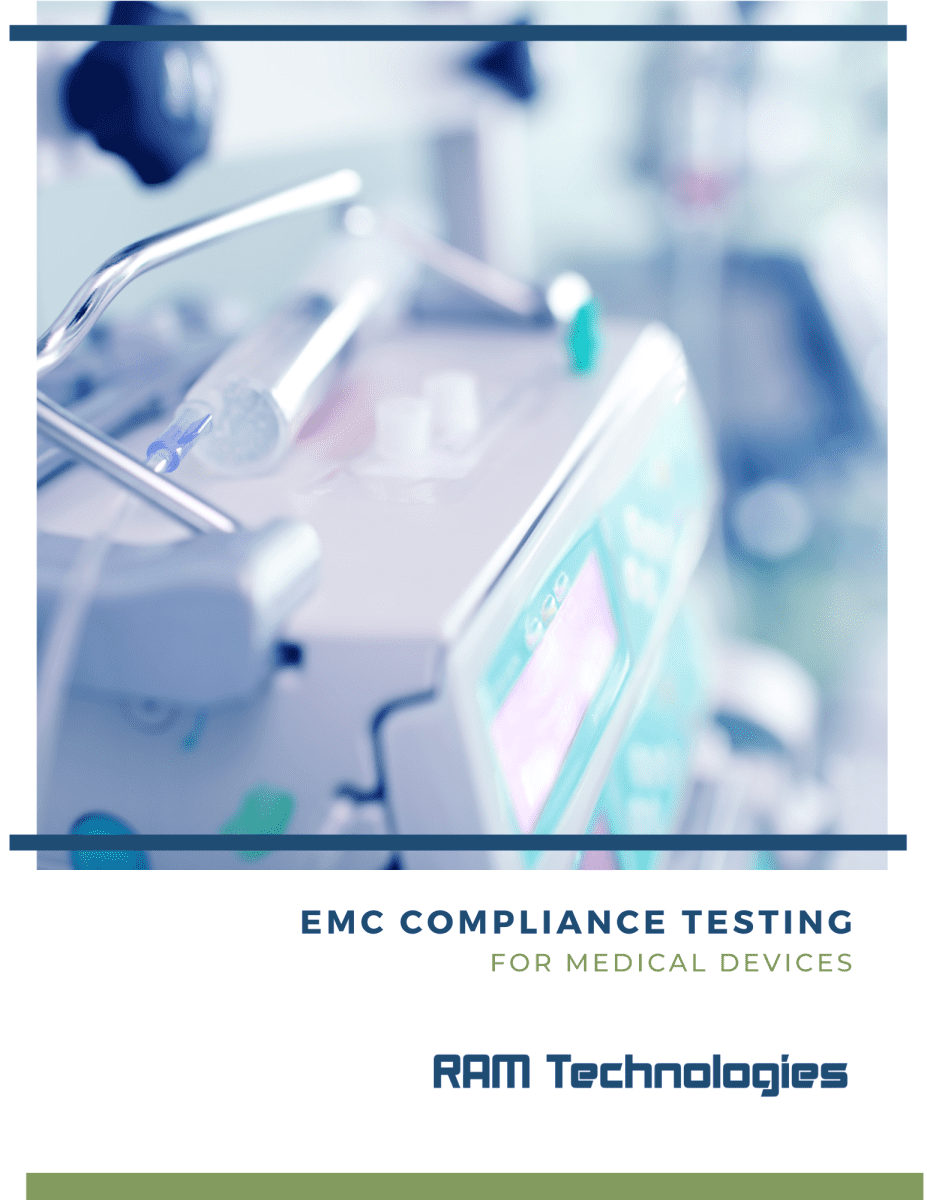EMC Compliance and EN 61000-4-5: What Manufacturers Should Know About Surge Testing
High energy pulses or high voltage pulses, also known as surges, can be detrimental to medical equipment, as well as to the operators and patients using the equipment. EN 61000-4-5 is a standard that is concerned with ensuring devices continue to operate as intended when faced with certain surges. We’ll talk about the basics of this standard for medical device manufacturers
What is EN 61000-4-5?
EN 61000-4-5, also known as IEC 61000-4-5, is a standard that develops measurement techniques for surges to confirm that devices can withstand certain levels of high-voltage or high-energy pulses. This is part of a larger set of electromagnetic compatibility (EMC) standards.
Surges could come from switching power on or off or other electrical faults. Direct lightning strikes, while they can cause surges, are not included in this standard.
How to Test for EN 61000-4-5
There are two surge pulse generators used with EN 61000-4-5. Terminals connected to symmetrically operated communication lines will be tested using the 10/700μsec surge pulse generator. Symmetrically operated communication lines are connected to a balanced load. This means the current in each line is equal and opposite in direction. The types of surges tested with this generator are common on communication lines. They have a rise time of 10 microseconds and a fall time of 700 microseconds.
In all other cases, the test will be conducted using the 1.2/50μsec surge pulse generator. This includes testing terminals connected to short signal connections and power supply lines because the surges generated resemble those that are common on these types of lines. Surges generated have a rise time of 1.2 microseconds and a fall time of 50 microseconds.
Rise and Fall Time
For both generators, the rise time represents how long it takes for the voltage to rise from 10% to 90% of its peak value, and the fall time is the time it takes to fall from 90% to 10%.
Effective Output Impedance
Testing for the standard also includes guidelines for the effective output impedance of each surge generator. Effective output impedance measures how much the output voltage of a surge generator will change when the load on a generator changes. If there is a low effective output impedance, it means the output voltage will not change much, for example.
- Effective output impedance for 1.2/50µsec surge pulse generator: 2Ω ±10%.
- Effective output impedance for 10/700µsec surge pulse generator: 40Ω ±10%.
Source Impedances
The specific impedances that are used in the test should be chosen in a way that produces a surge that is likely to happen to the equipment when used in its normal environment.
Lower source impedances mean stricter testing, and some non-IEC standards may apply in certain regions, including the U.S. However, for IEC 61000-4-5, the following source impedances apply:
- Public mains line to line: The impedance between two live wires in the public mains power supply network is typically 2 ohms.
- Public mains line to earth: Between a live wire in the public mains power supply and the earth, there is normally an impedance of 12 ohms.
- Signal lines to earth: The impedance between all other lines and the earth is generally 42 ohms.
Coupling networks and EN 61000-4-5
Different types of interconnections need to be tested using different coupling networks. Distinct cases in surge testing include:
- Line-to-line coupling and line-to-earth coupling in a mains power connection (one line, one neutral and three lines, one neutral for each).
- Unshielded signal line connections – both unsymmetric and symmetric with different clamping devices and capacitors.
- Shielded signal line connections where the shield is connected to the earth at one end, both ends, or is a multiple shielded cable.
Test levels for IEC 61000-4-5
Installation conditions of the product or product type will dictate the test levels used to ensure compliance. Installation classes are as follows:
- Class 0: Well-protected electrical environment (may be in a special room)
- Class 1: Partially protected electrical environment
- Class 2: Environment with well-separated cables (including short runs)
- Class 3: Power and signal cables run in parallel in these environments
- Class 4: Outdoor cables are used in this environment, in addition to the power cable. Cables are also used for both electric circuits and electronics.
- Class 5: Electronic equipment that is connected to telecommunication cables and overhead power lines in areas that are not densely populated belongs to this class
- Class X: This class applies to any special conditions not addressed in any of the other classes
What to know about EN 61000-4-5 and PSUSs for Your Medical Device
At Level 3, equipment should be able to handle a 1.5 kV surge on the power supply input and a 0.8 kV surge on signal and control ports. Equipment used in commercial or industrial environments will normally need to meet the standards of Level 3 or higher. This is because they are more likely to experience surges.
RAM Technologies’ power supply units meet the standards under IEC 61000-4-5, so choosing one of our power supply units can help you move through the process of getting to market faster. Have any questions about our units or the EMC standards our products meet?
You can find information on our downloadable data sheets, available on each power supply page. For any specific questions, send us a message.
RAM Technologies’ power supplies are 60601-1 3.2 certified and meet 60601-1-2 EMC standards. When you’re designing your medical device and need help with a PSU, contact us for details.

Download the EMC Summary
The road to putting your medical device on the market includes many steps, including passing all necessary electromagnetic compatibility (EMC) testing. These tests play an essential role in ensuring your device doesn’t emit a significant amount of electromagnetic interference, which could be via conducted or radiated emissions. Download our guide to EMC compliance to learn more about what medical device manufacturers should consider.
More Resources:
Downloadable Guide to IEC 60601-1
EMC Compliance and EN 61000-4-3: RF Susceptibility
EMC Compliance and EN61000-4-4: EFT Level 3
EMC Compliance Testing for Medical Devices



